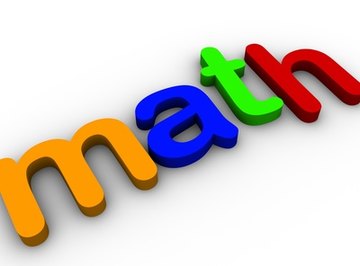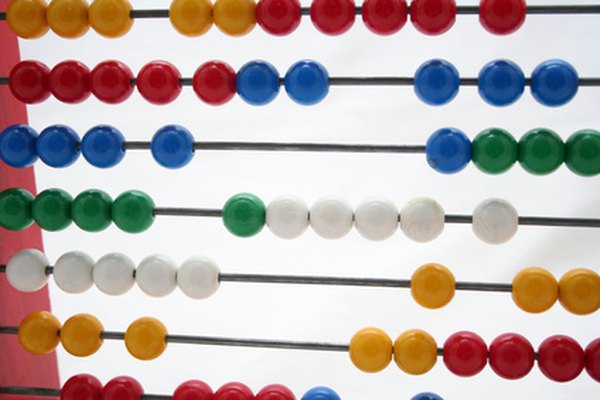
Children with learning disabilities may have trouble in math for different reasons. They may struggle with the language, organization, computation or visual spatial relationships. Given the proper tools and resources, children can learn strategies to succeed. Find out which approaches work and stick with them. The important thing to remember is to get creative and maintain a positive learning environment.
Mnemonics

Mnemonics can be used for all educational subjects from English grammar to scientific formulas. The key to mnemonics is repetition and the ability to create pictures of math lessons with the mind. In math, mnemonics can help students remember different math facts, such as subtraction borrowing: “Bigger bottom better borrow” or labels: “King Hector Died Miserable Death Died Measles” (the metric system).
Stories and songs can also help children relate math to life experiences. It may be easier for students with learning disabilities to recall a math problem such as 3 times X equals 24 when there is a story attached. Likewise, a rhyming song or poem will enable children to sing or hum each step until they find the answers.
Fact Charts and Flash Cards
Fact charts and flash cards work best for visual learners. A fact chart is used for each multiplication reference. On the X and Y axes, list numbers 1 through 10 (12 for older students). Fill in the appropriate answers inside the grid. Students will be able to use their finger or tracking device to find the answers. Fact charts can be carried in student folders or pockets. Memorized facts should be redacted to stimulate memory recall. Flash cards provide good practice at home. Instruct students to place any cards whose answers are not familiar in a separate pile. Quiz students until all facts are memorized.
Abacus and Objects

Some children with learning disabilities do better with tangible objects rather than written problems. An abacus will help children physically count numbers as they move spheres from one side to the other. Objects can be used in geometry for students to observe and measure the actual dimensions of shapes. Objects can also be used for word problems; for example, if a word problem uses oranges as an example, students use objects to represent the oranges. Children arrange, add and remove the objects as they follow each step. If objects are not available, have students draw shapes and pictures on paper and cross off or add them accordingly.
Use Your Hands

Students can use their fingers as a discreet way to solve math problems. Older students may find this method most beneficial.
Some learning disabilities involve poor organizational skills. Children with this issue may become overwhelmed when math tools are incorporated into their learning. Hands are useful to these children because they can't get misplaced.
Fingers can be used for more than counting. In the article, "Math Learning Disabilities," LD Online writer Kate Garnett offers a hand exercise that allows students to quickly find answers to the nines multiplication table: “The number that is being multiplied is folded over... The student then counts the number of fingers to the left of the folded down finger (in this example of 9 times 5, there are four fingers to the left). This number represents the tens digit (4). The student then counts the number of fingers to the right of the folded down finger (in this example, there are five fingers to the left). This number represents the ones digit (5). The answer to this problem (9 times 5) is 45.”
Math Games
Board, computer and video games teach math to students at all levels of learning. Games include multiple strategies at once, including auditory, visual and physical interaction to help students learn math concepts in a fun, relaxed way. "Sum Swamp Addition and Subtraction Game" by Learning Resources is a board game that takes children on an adventure while they learn to add and subtract. "Leapster Learning Game Scholastic Math Missions" by Leap Frog teaches addition, subtraction, multiplication and geometry as children "earn money" for every math mission they complete. The game rewards correct answers by giving access to arcade games at certain levels reached. Ask educators which games they find successful or create your own to give children a variety to choose from.
References
About the Author
Sera Rivers is a writer, writing coach and child advocate. In 2007 she began teaching creative writing in group and private settings and freelancing for "Southwoods Magazine." She writes online about Western Massachusetts special needs kids. Rivers received her Bachelor of Arts in creative writing from University Without Walls at the University of Massachusetts, Amherst in 2010.
Photo Credits
math image by jaddingt from Fotolia.com
